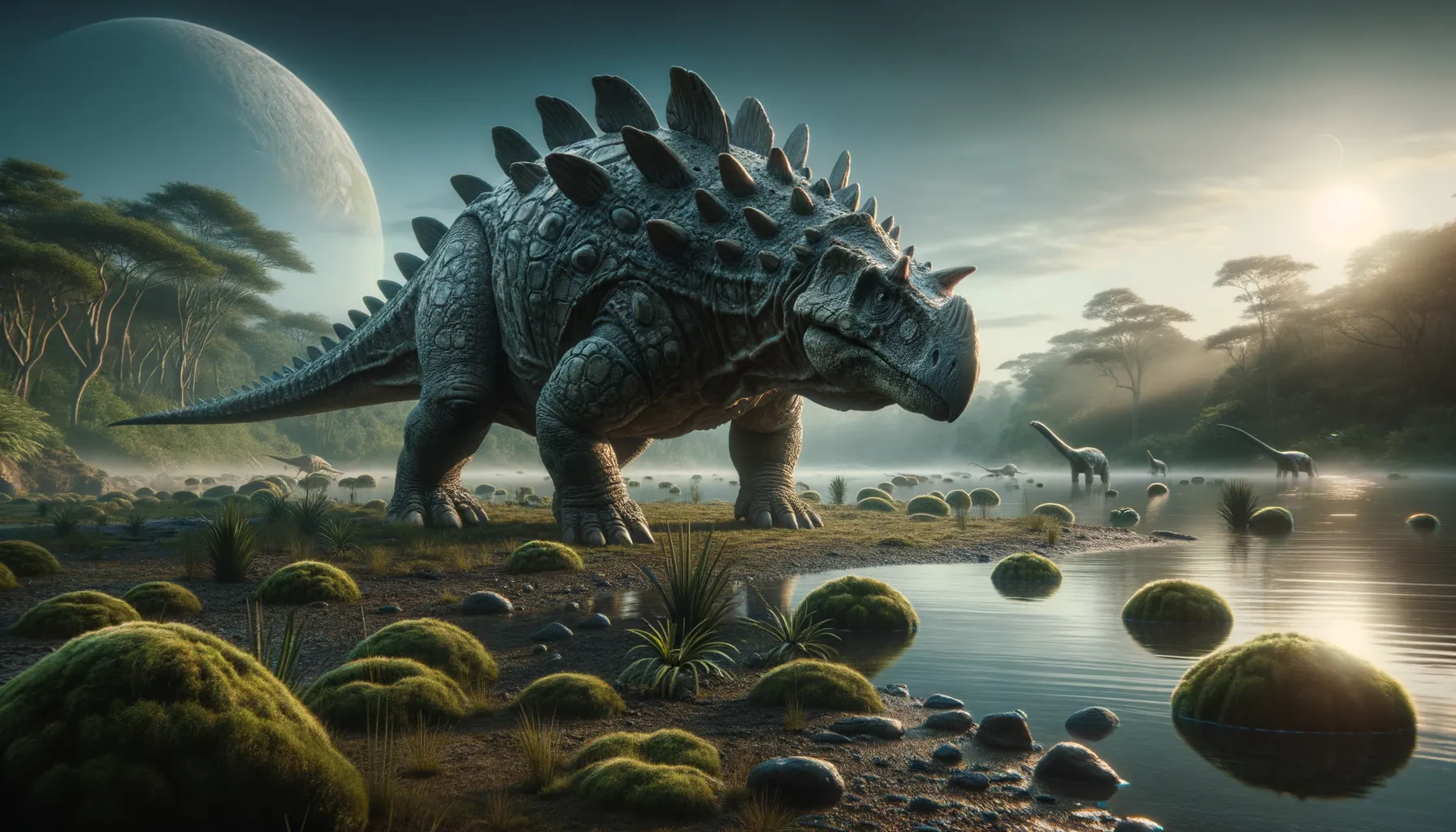
Crichtonpelta
A fortress of nature's armored design.
Period
Cretaceous
Length
Close to 5 meters long.
Height
Roughly 1.2 meters at the shoulder.
Weight
Approximately 1,500 kilograms.
Crichtonpelta was a heavily armored dinosaur that lived during the late Cretaceous period. Known for its bony armor, this dinosaur was part of the ankylosaur family, which was characterized by tough, protective features. Crichtonpelta walked on four legs and primarily fed on low-growing vegetation. Its discovery has provided valuable insights into the diversity and adaptation of armored dinosaurs, revealing how these creatures survived among larger predators.
Diet
Crichtonpelta was a herbivore, feeding on various plants. Its low snout likely helped it graze on ferns and other ground vegetation.
Hunting
Being a plant eater, Crichtonpelta did not hunt other animals. Instead, it spent much of its time foraging quietly, using its armored body as defense.
Environmental challenges
Crichtonpelta faced challenges such as avoiding large predators in its environment. Its heavy armor provided effective protection against attacks. Additionally, it had to adapt to changing vegetation types, ensuring access to a constant food supply. Severe weather events and possible volcanic activity in its region also posed threats.
Speed
Relatively slow due to its heavy armor.
Lifespan
Possibly around 20 to 30 years.
First discovery
First discovered in Liaoning, China, in the early 21st century.
Fun Facts
- Crichtonpelta was a dinosaur that lived during the Late Cretaceous period, around 85 million years ago.
- This dinosaur's name is a tribute to Michael Crichton, the author of the famous book 'Jurassic Park'.
- Crichtonpelta was an ankylosaur, known for its armored body and being herbivorous.
- It likely roamed in what is now known as Asia, specifically in regions that are part of modern-day China.
- Crichtonpelta's most distinctive feature was its protective armor, which helped it defend against predators.
- Despite its heavy armor, Crichtonpelta was believed to be a relatively small ankylosaur, measuring around 4 meters in length.
- Crichtonpelta was part of a diverse group of dinosaurs that had specialized adaptations to thrive in their environment.
Growth and Development
As Crichtonpelta grew, its protective armor developed and hardened, becoming more effective with age. Juveniles might have had softer, less protective armor, making them more vulnerable. Growth patterns suggest that these dinosaurs matured at a steady pace, with their size offering increased protection and food access as they aged.
Habitat
Crichtonpelta inhabited forested areas and open plains, where it could find abundant plant life. These environments provided cover from predators and a variety of plant species for food. The semi-arid climate was typical of its Asian habitat during the Cretaceous, influencing the vegetation available.
Interaction with other species
Crichtonpelta likely coexisted with various herbivorous and carnivorous dinosaurs. Its armor meant it could peacefully graze alongside more aggressive species, avoiding conflict. Its presence in mixed dinosaur communities indicates a robust ecosystem where each species played specific roles.
Natural lifespan
Crichtonpelta's natural lifespan was around 20 to 30 years.
Reproduction
Like other ankylosaurs, Crichtonpelta likely laid eggs in nests on the ground. Parental care might have included guarding the nest or assisting hatchlings. Seasonal reproduction may have been timed to ensure hatchlings had access to plenty of fresh vegetation.
Social behaviour
Crichtonpelta might have been a solitary creature or gathered in groups for protection. Its herd behavior could have included communal grazing and shared vigilance against predators. Little evidence points to complex social structures, suggesting simple interactions based on survival needs.
Fossil locations
Fossils of Crichtonpelta have primarily been found in China, particularly in Liaoning Province. These discoveries have been crucial to understanding the evolution and geographic distribution of ankylosaurs. Fossil evidence highlights the Cretaceous biodiversity in Asia.
